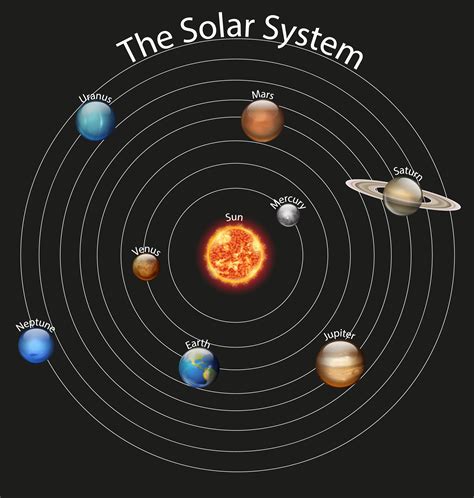How did the solar system come about

Web29 de ago. de 2024 · Our story starts about 4.6 billion years ago, with a wispy cloud of stellar dust. This cloud was part of a bigger cloud called a nebula. At some point, the cloud collapsed—possibly because the shockwave of a nearby exploding star caused it … The solar system is a pretty busy place. It’s got all kinds of planets, moons, … How Did the Solar System Form? The story starts about 4.6 billion years ago, with a … Where does the Sun's energy come from? Play Helios to find out! play; Space … Solar System. Universe. Science and Tech. Educators. Earth. All About Earth. Since … A transit is when one object in space crosses in front of another object in … Solar System. Universe. Science and Tech. Educators. Science & Technology. GPS … Build a model spacecraft to explore the solar system! Paper models of your … Where Does the Sun's Energy Come From? Space Place in a Snap answers this … Web22 de mar. de 2024 · Our solar system consists of our star, the Sun, and everything bound to it by gravity – the planets Mercury, Venus, Earth, Mars, Jupiter, Saturn, Uranus, and Neptune; dwarf planets such as Pluto; …
How did the solar system come about
Did you know?
WebThe solar system consists of the Sun, with planets and smaller objects such as asteroids and comets in orbit around it. Scientists have discovered other objects orbiting the Sun. These include ...
Web6 de mar. de 2024 · About 4.5 billion years ago, the sun began to take shape from a molecular cloud that was mainly composed of hydrogen and helium. A nearby supernova emitted a shockwave, which came in … WebEssential Information. Key Stage. Key Stage 2. School Subject. Astronomy. Resource Type. Video. Join the Royal Observatory Greenwich astronomers as they set out to discover …
WebThe Earth, like all the other planets in the solar system, started out its life as a disc of dust and gas orbiting the young Sun. The dust particles were brought together by the forces of drag to form clumps of rock that grew into “planetesimals” tens to hundreds of miles across, and then to Mars-sized “protoplanets” by colliding with each other. WebThis general scheme of planet formation—the building up of larger masses by the accretion of smaller ones—occurred in the outer solar system as well. Here, however, the accretion of icy planetesimals produced objects with masses 10 times that of Earth, sufficient to cause the gravitational collapse of the surrounding gas and dust in the solar nebula. This …
Web#solarsystem #mythology #Pluto How did planets of our solar system get their names? How old are the names of our planets? What is the meaning of the planet’s...
Web13 de abr. de 2024 · In 2024, total solar capacity hit the Terawatt mark. Assuming an energy loss of 8%, that’s 80 TWh of solar power lost in 2024. And with solar capacity … flare tool ai ccWeb15 de fev. de 2024 · Scientists who study the solar system tend to ask big questions: How was our solar system formed? Where did the building blocks of life come from? What hazards from above threaten life on our planet? To find answers, they’re looking more and more at small worlds. What are small worlds? Asteroids for sure. Comets too. Also the … can stormy weather cause headachesWebHá 1 dia · The Jupiter Icy Moons Explorer mission, or Juice, is expected to launch Thursday at 8:15 a.m. ET aboard an Ariane 5 rocket from Europe’s Spaceport in Kourou, French … can stove be next to refrigeratorWeb113 Likes, 0 Comments - EarthSky (@earthskyscience) on Instagram: "Did you know that Venus has a ring? Well, sort of. Not a ring of icy or dusty "moonlets" or grain..." flare tool illustrator 0WebClearly, without any irrefutable evidence, the answer has to remain that no, type three aliens didn’t build the solar system. As with most everything else about the Kardashev Scale, … can stoves be paintedWebHá 9 horas · A European spacecraft rocketed away Friday on a decadelong quest to explore Jupiter and three of its icy moons that could have buried oceans. The journey began with … flare tool 37WebHá 9 horas · A European spacecraft rocketed away Friday on a decadelong quest to explore Jupiter and three of its icy moons that could have buried oceans. The journey began with a morning liftoff by Europe's Ariane rocket from French Guiana in South America. It will take the robotic explorer, dubbed Juice, eight years to reach Jupiter, where it will scope out … flare tips bboy